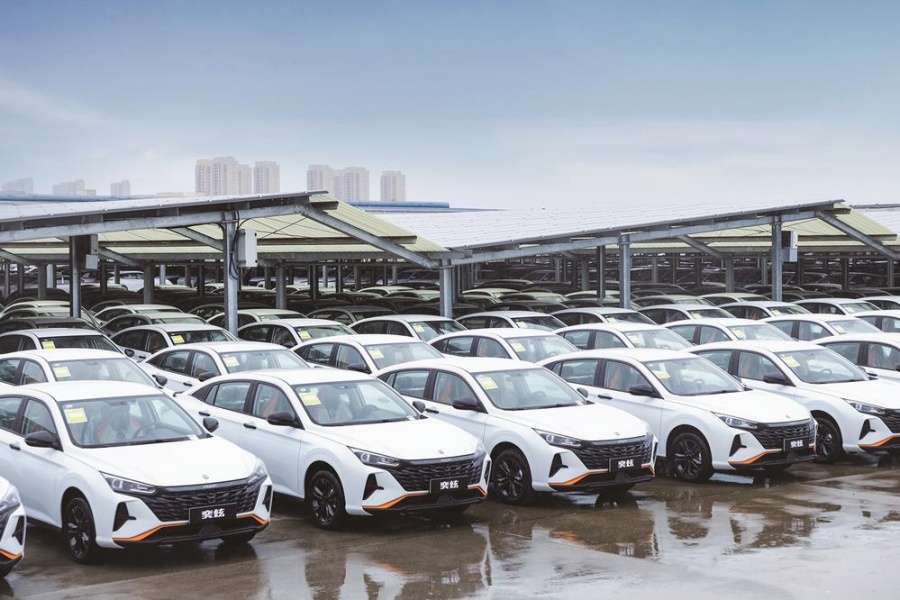工信部:车企要充分开展组合驾驶辅助测试验证,不得进行夸大和虚假宣传
4月16日,工业和信息化部装备工业一司组织召开智能网联汽车产品准入及软件在线升级管理工作推进会。部装备工业发展中心、主要汽车生产企业近60名代表参加会议。
会议围绕工业和信息化部、市场监管总局《关于进一步加强智能网联汽车产品准入、召回及软件在线升级管理的通知》(以下简称《通知》)有关产品准入和软件在线升级备案要求,听取汽车生产企业落实情况及建议。

会议强调,汽车生产企业要深刻领会《通知》要求,充分开展组合驾驶辅助测试验证,明确系统功能边界和安全响应措施,不得进行夸大和虚假宣传,严格履行告知义务,切实担负起生产一致性和质量安全主体责任,切实提升智能网联汽车产品安全水平。
上述《通知》于今年2月25日发布,旨在落实相关政策要求,进一步做好搭载组合驾驶辅助系统和具备软件在线升级(OTA 升级)功能的智能网联汽车产品准入与召回管理,规范汽车生产企业OTA升级活动。
《通知》明确,汽车生产企业应当主动履行产品质量安全主体责任,要根据《智能网联汽车产品准入、召回及软件在线升级管理与技术指南》,加强与研发生产智能网联汽车产品及开展OTA升级活动相适应的能力建设。企业要对智能网联汽车产品及OTA升级活动开展充分的测试验证,明确系统边界和安全响应措施,确保控制策略合理,严格履行告知义务,确保在开发、生产、运行等阶段进行有效的安全管理,不断提升产品功能、性能和质量安全水平。

在车辆产品主要技术参数表中,该通知要求补充增加组合驾驶辅助系统和OTA升级信息有关技术参数,纳入工业和信息化部产品准入和生产一致性管理,并向市场监管总局备案,保障汽车产品缺陷调查和召回管理顺利实施。企业申报智能网联汽车产品准入,应当完整、准确填报有关技术参数,涉及产品功能和性能的,还应当提交相关检验检测报告等验证材料。
目前自动驾驶技术依据美国汽车工程师学会(SAE)标准分为6级:L0级为无自动化,全由人类驾驶员操控;L1级为驾驶辅助,像自适应巡航等辅助特定操作,驾驶员仍全面掌控;L2级能同时控制横向与纵向运动,可短暂脱手但驾驶员责任依旧;L3级在特定条件下自主驾驶,遇复杂情况提前让驾驶员接管;L4级于特定区域和条件中完全自主,突发状况也能自行处理;L5级则是在任何环境与条件下都无需人类干预,彻底摆脱方向盘等驾驶控制装置。
此前,行业中存在不少夸大宣传驾驶辅助系统的事件。部分车企将L2级辅助驾驶吹嘘为 “自动驾驶”,误导消费者。例如,有的企业在宣传资料和广告中,过度强调车辆的自动行驶能力,模糊了辅助驾驶和自动驾驶的界限,让消费者误以为车辆在各种路况下都能完全自主行驶,从而带来极大的安全隐患。
随着智能网联汽车的快速发展,工信部的此次会议及相关政策举措,将促使车企更加重视自动驾驶技术研发,避免过度营销,推动行业健康、有序发展。
On April 16th, the Equipment Industry Department of the Ministry of Industry and Information Technology organized a meeting to promote the admission and online software upgrade management of intelligent connected vehicle products. Nearly 60 representatives from the Equipment Industry Development Center and major automobile manufacturing enterprises attended the meeting.
The meeting focused on the requirements for product access and software online upgrade filing in the "Notice on Further Strengthening the Management of Intelligent Connected Vehicle Product Access, Recall, and Software Online Upgrade" (hereinafter referred to as the "Notice") issued by the Ministry of Industry and Information Technology and the State Administration for Market Regulation, and listened to the implementation situation and suggestions of automobile production enterprises.
The meeting emphasized that automobile manufacturers should deeply understand the requirements of the "Notice", fully carry out combined driving assistance testing and verification, clarify system functional boundaries and safety response measures, not exaggerate or falsely promote, strictly fulfill the obligation of notification, effectively assume the main responsibility for production consistency and quality safety, and effectively improve the safety level of intelligent connected vehicle products.
The above-mentioned Notice was released on February 25th this year, aiming to implement relevant policy requirements, further improve the admission and recall management of intelligent connected vehicle products equipped with combined driving assistance systems and software online upgrade (OTA upgrade) functions, and standardize OTA upgrade activities of automobile manufacturers.
The Notice specifies that automobile manufacturers should actively fulfill their main responsibility for product quality and safety, and strengthen their capacity building in accordance with the "Management and Technical Guidelines for Access, Recall, and Online Software Upgrades of Intelligent Connected Vehicle Products" to develop and produce intelligent connected vehicle products and carry out OTA upgrade activities. Enterprises should conduct sufficient testing and verification of intelligent connected vehicle products and OTA upgrade activities, clarify system boundaries and security response measures, ensure reasonable control strategies, strictly fulfill disclosure obligations, ensure effective security management in development, production, operation and other stages, and continuously improve product functionality, performance and quality safety levels.
In the main technical parameter table of vehicle products, this notice requires the addition of technical parameters related to the combination driving assistance system and OTA upgrade information, which will be included in the product access and production consistency management of the Ministry of Industry and Information Technology, and filed with the State Administration for Market Regulation to ensure the smooth implementation of automobile product defect investigation and recall management. Enterprises applying for admission of intelligent connected vehicle products should complete and accurately fill in relevant technical parameters. If it involves product functions and performance, relevant inspection and testing reports and other verification materials should also be submitted.
At present, autonomous driving technology is divided into 6 levels according to the Society of Automotive Engineers (SAE) standards: Level L0 is non automated and fully controlled by human drivers; L1 level is for driving assistance, such as adaptive cruise control, which assists specific operations while the driver still has full control; L2 level can control both lateral and longitudinal movements simultaneously, and can be briefly released, but the driver's responsibility remains the same; L3 level autonomous driving under specific conditions, allowing the driver to take over in advance in complex situations; Level 4 is fully autonomous in specific areas and conditions, and can handle emergencies on its own; The L5 level requires no human intervention in any environment or condition, completely eliminating driving control devices such as the steering wheel.
Previously, there were many incidents in the industry that exaggerated the promotion of driving assistance systems. Some car companies boast about L2 level assisted driving as "autonomous driving", misleading consumers. For example, some companies overly emphasize the autonomous driving capability of vehicles in their promotional materials and advertisements, blurring the boundary between assisted driving and autonomous driving, leading consumers to mistakenly believe that vehicles can operate completely autonomously in various road conditions, thereby posing great safety hazards.
With the rapid development of intelligent connected vehicles, the conference and related policy measures of the Ministry of Industry and Information Technology will encourage car companies to pay more attention to the research and development of autonomous driving technology, avoid excessive marketing, and promote the healthy and orderly development of the industry.

